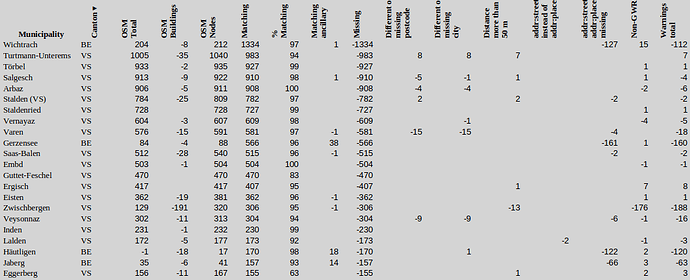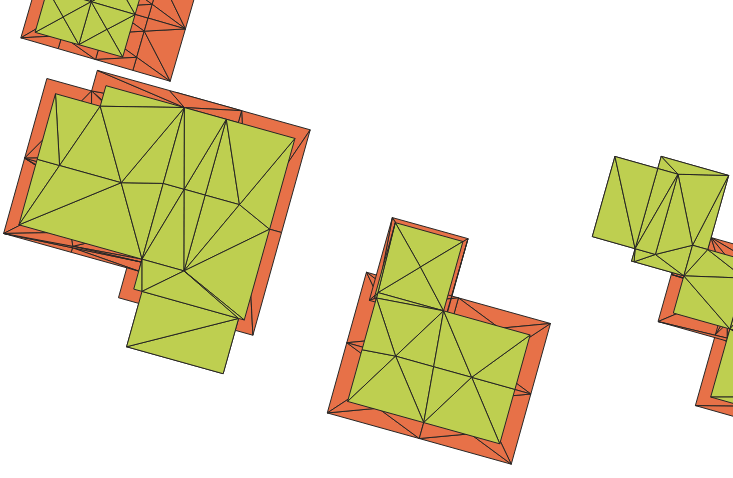Hi everyone
With the recent updates on address statistics and comparison with GWR data, I thought this would be a good opportunity to help improve address coverage in Switzerland. To this end, I’ve written a detailed Wiki guide proposing a step-by-step process for importing addresses from the Swiss Federal Register of Buildings and Dwellings (GWR) into OpenStreetMap (OSM) using JOSM.
This guide is intended to assist mappers looking to improve address data, such as in cases like these:
- Usage of cadastral websites of a canton to map OpenStreetMap
- Frage zu Adressen
- Vaud: Améliorer nos villages
“Un objectif à plus long terme serait de numéroter les bâtiments, mais c’est un travail long et fastidieux tant qu’il n’y a pas une solution simple d’import des adresses.”
This guide simplifies and streamlines the process of importing GWR address data. After applying the guide in Zug and Cham, address matching rates on qa.poole.ch increased from 52% to 99% and 71% to 99% respectively. The warnings total decreased by 444 warnings in Cham and 1332 in Zug.
Overview of the Guide
The guide covers the following key steps:
- Preparation
- Data Cleanup:
- Remove redundant or incorrect address tags (ways, nodes, entrances).
- Conflation Process:
- Use the Conflation plugin in JOSM to match and merge data.
- Review and manually validate matches.
- Handling Validation Warnings:
- Review all warnings (e.g., duplicate house numbers, suspicious tag combinations).
- Upload
Benefits of the Guide
- Consistency: Ensures a uniform approach to importing address data, avoiding discrepancies between imported and existing data.
- Accuracy: Ensures address data is placed precisely at building entrances.
- Sustainability: The use of nodes instead of ways simplifies future updates.
- Efficiency: Speeds up the import process.
What’s Missing in the Wiki?
- Removal of associatedStreet relations:
- This should be addressed in the guide, as it will likely come up during the conflation and validation steps. Discussion: Forum post.
- Visual Aids:
- Adding more screenshots for better visualization of the workflow.
List of Imported Municipalities:- The list on qa.poole.ch shows a matching percentage. If this is over 97%, any import is usually unnecessary.
- Building Geometry Updates:
- The GWR address data sometimes places nodes outside improperly aligned or missing building ways. In such cases:
- Missing buildings need to be added.
- Misaligned buildings must be moved to their correct locations. This ensures that address nodes align with the actual building entrances.
Further Reading
I’d appreciate any feedback, especially suggestions for:
- Improving the workflow.
- Identifying missing edge cases.
- Streamlining the conflation and validation steps:
- Can the information in the Conflation tooltip be displayed permanently in the conflation list?
- Are there automated methods to select and zoom to select primitives one by one?
Thank you for your time!


